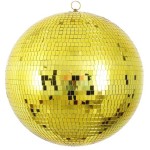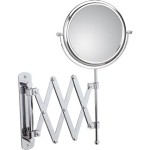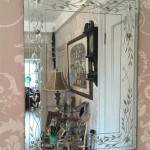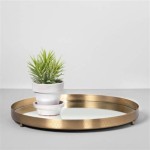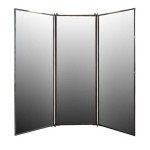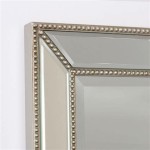Convex Mirrors Used In Car Headlights
Convex mirrors are not used in car headlights. Headlights require a concave mirror or lens to focus the light beam. The fundamental principles of optics dictate that a convex mirror diverges light, making it unsuitable for headlight applications which demand a concentrated, forward-projected beam. Instead, convex mirrors are commonly employed in other areas of a vehicle, particularly for expanding the driver's field of view.
The primary purpose of a car headlight is to illuminate the road ahead, ensuring safe driving conditions in low-light environments. This requires a focused beam of light projected in a specific direction. Concave mirrors, unlike convex mirrors, possess the optical property of converging light rays. A light source placed at the focal point of a concave mirror will have its emitted light rays reflected outwards in a parallel or near-parallel beam, ideal for headlight functionality.
Conversely, a convex mirror spreads out incident light rays. When parallel rays of light strike a convex mirror, they reflect outwards and diverge away from each other. This diverging property is highly beneficial in applications where a wider field of view is required, such as side-view mirrors or backup cameras. The wider field of view allows the driver to observe a larger area around the vehicle, enhancing safety and reducing blind spots.
The geometry of a convex mirror contributes to its diverging properties. The reflecting surface curves outwards, resulting in reflected light rays spreading away from the principal axis. The degree of divergence is determined by the curvature of the mirror. A more sharply curved mirror will exhibit a greater divergence of light, leading to a wider field of view.
In contrast, concave mirrors curve inwards. This inward curvature allows incident light rays to converge towards a focal point. The precise location of the focal point is determined by the curvature of the mirror. This focusing property is what makes concave mirrors suitable for headlight applications, as it concentrates the light emitted from the bulb into a directed beam.
The materials used in headlight reflectors are typically highly reflective metals, such as aluminum or vapor-deposited aluminum coatings on a glass or plastic substrate. These materials are chosen for their high reflectivity, maximizing the amount of light projected forward. The reflector's surface is precisely shaped to achieve the desired beam pattern, ensuring proper illumination of the road ahead while minimizing glare for oncoming drivers.
Modern headlight designs often incorporate lenses in conjunction with reflectors to further refine the beam pattern. These lenses can be made of glass or plastic and are designed to refract the light in a specific way, optimizing the light distribution on the road. Precise lens design plays a crucial role in meeting regulatory requirements for headlight performance and minimizing glare.
The use of convex mirrors in automotive applications focuses primarily on enhancing driver visibility. Side-view mirrors utilize convex mirrors to provide a wider view of the adjacent lanes, assisting with lane changes and monitoring traffic. The "objects in mirror are closer than they appear" warning printed on many side-view mirrors is a direct consequence of the diverging properties of the convex mirror. The image formed by a convex mirror is smaller than the actual object, creating the illusion of increased distance.
Similarly, rear-view mirrors, especially in larger vehicles like trucks and buses, may utilize convex sections to provide a wider field of view behind the vehicle. This expanded field of view aids in maneuvering and reversing, particularly in situations with limited visibility.
Backup cameras, a increasingly common feature in modern vehicles, also benefit from convex lenses. The wide-angle lens in a backup camera captures a larger area behind the vehicle, assisting the driver in parking and avoiding obstacles. The image displayed on the in-car monitor provides a clear view of the area directly behind the vehicle, enhancing safety during reversing maneuvers.
In summary, while convex mirrors play a valuable role in enhancing driver visibility in various automotive applications, they are not used in car headlights. Headlights require the converging properties of concave mirrors or lenses to produce a focused beam of light for illuminating the road ahead. The distinct optical properties of convex and concave mirrors dictate their respective applications in vehicle design, each contributing to overall safety and functionality.

Car Headlights

Concave Vs Convex Mirrors In Cars

Which Mirror Is Used In The Headlights Of A Car
Flashlights And Car Headlights All Have Concave Mirrors Why Would It Not Be A Good Idea To Use Convex Mirror Instead Quora

Concave Vs Convex Mirrors In Cars
What Type Of Mirror Is Used In Car Headlights Education Club 24hrs Quora

Convex And Concave Mirrors In Cars

State The Type Of Mirrors Used For I Headlights And Ii Rearview In Cars Motorcycles Give Reason To Justify Your Answer Each Case

How A Concave Mirror Is Used In Headlights And Searchlights To Throw Light At Long Distance Homework Study Com

Spherical Mirror Structure Types Terminologies


